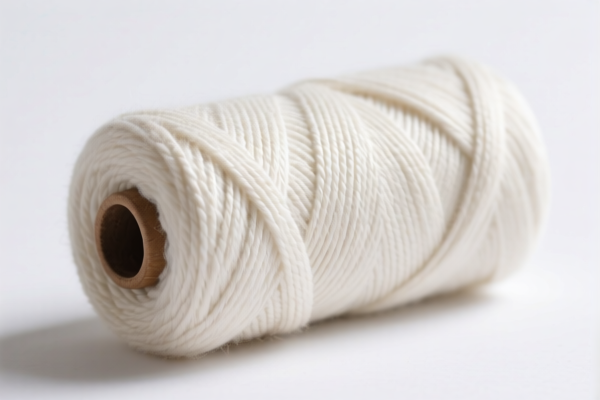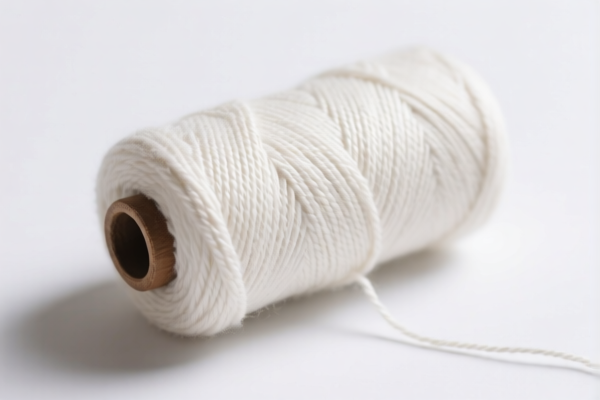| HS Code | Official Doc | Tariff Rate | Origin | Destination | Effective Date |
|---|---|---|---|---|---|
| 5205310000 | Doc | 60.8% | CN | US | 2025-05-12 |
| 5204110000 | Doc | 59.4% | CN | US | 2025-05-12 |
| 5206440000 | Doc | 64.2% | CN | US | 2025-05-12 |
| 5206330000 | Doc | 64.2% | CN | US | 2025-05-12 |
| 5205480090 | Doc | 67.0% | CN | US | 2025-05-12 |




Here is the classification and tariff information for Combed Cotton Yarn Bobbin based on the provided HS codes and tax details:
✅ HS CODE: 5205310000
Product Classification: Combed Cotton Yarn
Total Tax Rate: 60.8%
- Base Tariff Rate: 5.8%
- Additional Tariff: 25.0%
- Special Tariff after April 11, 2025: 30.0%
- Note: This is the most common classification for general-purpose combed cotton yarn.
✅ HS CODE: 5204110000
Product Classification: Cotton Sewing Thread
Total Tax Rate: 59.4%
- Base Tariff Rate: 4.4%
- Additional Tariff: 25.0%
- Special Tariff after April 11, 2025: 30.0%
- Note: This classification is specific to sewing thread and may not apply to general-purpose yarn bobbins.
✅ HS CODE: 5206440000
Product Classification: Cotton Yarn (Non-Sewing Use)
Total Tax Rate: 64.2%
- Base Tariff Rate: 9.2%
- Additional Tariff: 25.0%
- Special Tariff after April 11, 2025: 30.0%
- Note: This is for non-sewing cotton yarn, which may include industrial or decorative uses.
✅ HS CODE: 5206330000
Product Classification: Cotton Yarn (Non-Sewing Use)
Total Tax Rate: 64.2%
- Base Tariff Rate: 9.2%
- Additional Tariff: 25.0%
- Special Tariff after April 11, 2025: 30.0%
- Note: This is another classification for non-sewing cotton yarn, possibly for different specifications or processing methods.
✅ HS CODE: 5205480090
Product Classification: Multi-strand or Cable Yarn
Total Tax Rate: 67.0%
- Base Tariff Rate: 12.0%
- Additional Tariff: 25.0%
- Special Tariff after April 11, 2025: 30.0%
- Note: This classification applies to multi-strand or cable-type cotton yarn, which may be used in specialized applications.
📌 Proactive Advice:
- Verify the exact product description (e.g., whether it is for sewing, industrial use, or decorative purposes).
- Check the unit price to ensure it aligns with the classification (some HS codes may have different thresholds).
- Confirm if any certifications (e.g., textile standards, origin documentation) are required for customs clearance.
- Be aware of the April 11, 2025, tariff increase and plan accordingly for import costs.
Let me know if you need help determining the most accurate HS code for your specific product. Here is the classification and tariff information for Combed Cotton Yarn Bobbin based on the provided HS codes and tax details:
✅ HS CODE: 5205310000
Product Classification: Combed Cotton Yarn
Total Tax Rate: 60.8%
- Base Tariff Rate: 5.8%
- Additional Tariff: 25.0%
- Special Tariff after April 11, 2025: 30.0%
- Note: This is the most common classification for general-purpose combed cotton yarn.
✅ HS CODE: 5204110000
Product Classification: Cotton Sewing Thread
Total Tax Rate: 59.4%
- Base Tariff Rate: 4.4%
- Additional Tariff: 25.0%
- Special Tariff after April 11, 2025: 30.0%
- Note: This classification is specific to sewing thread and may not apply to general-purpose yarn bobbins.
✅ HS CODE: 5206440000
Product Classification: Cotton Yarn (Non-Sewing Use)
Total Tax Rate: 64.2%
- Base Tariff Rate: 9.2%
- Additional Tariff: 25.0%
- Special Tariff after April 11, 2025: 30.0%
- Note: This is for non-sewing cotton yarn, which may include industrial or decorative uses.
✅ HS CODE: 5206330000
Product Classification: Cotton Yarn (Non-Sewing Use)
Total Tax Rate: 64.2%
- Base Tariff Rate: 9.2%
- Additional Tariff: 25.0%
- Special Tariff after April 11, 2025: 30.0%
- Note: This is another classification for non-sewing cotton yarn, possibly for different specifications or processing methods.
✅ HS CODE: 5205480090
Product Classification: Multi-strand or Cable Yarn
Total Tax Rate: 67.0%
- Base Tariff Rate: 12.0%
- Additional Tariff: 25.0%
- Special Tariff after April 11, 2025: 30.0%
- Note: This classification applies to multi-strand or cable-type cotton yarn, which may be used in specialized applications.
📌 Proactive Advice:
- Verify the exact product description (e.g., whether it is for sewing, industrial use, or decorative purposes).
- Check the unit price to ensure it aligns with the classification (some HS codes may have different thresholds).
- Confirm if any certifications (e.g., textile standards, origin documentation) are required for customs clearance.
- Be aware of the April 11, 2025, tariff increase and plan accordingly for import costs.
Let me know if you need help determining the most accurate HS code for your specific product.
Customer Reviews
No reviews yet.